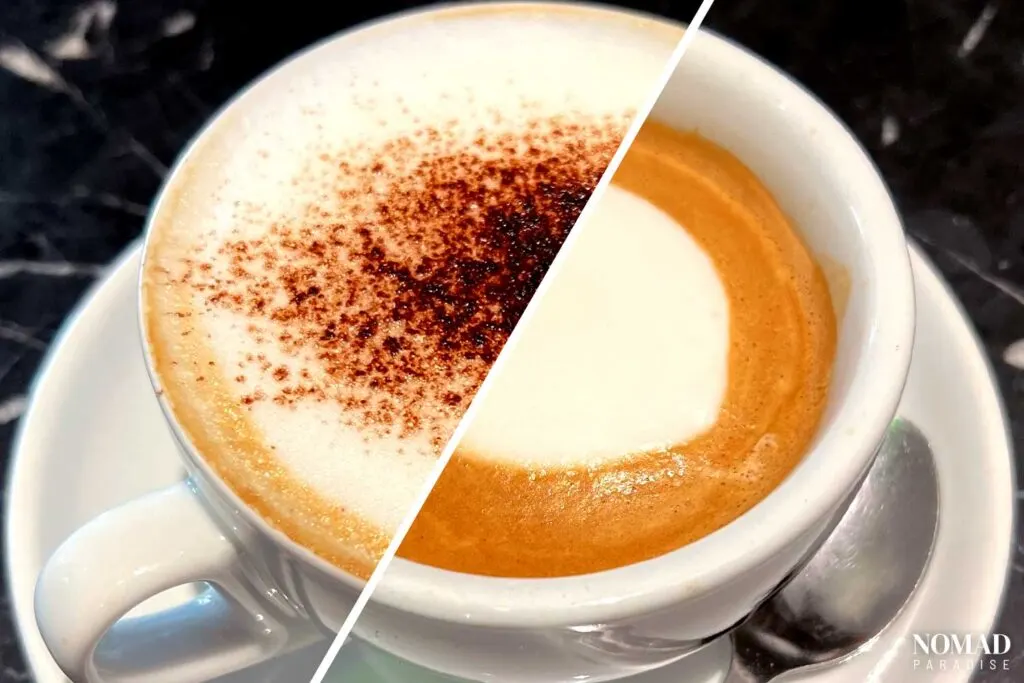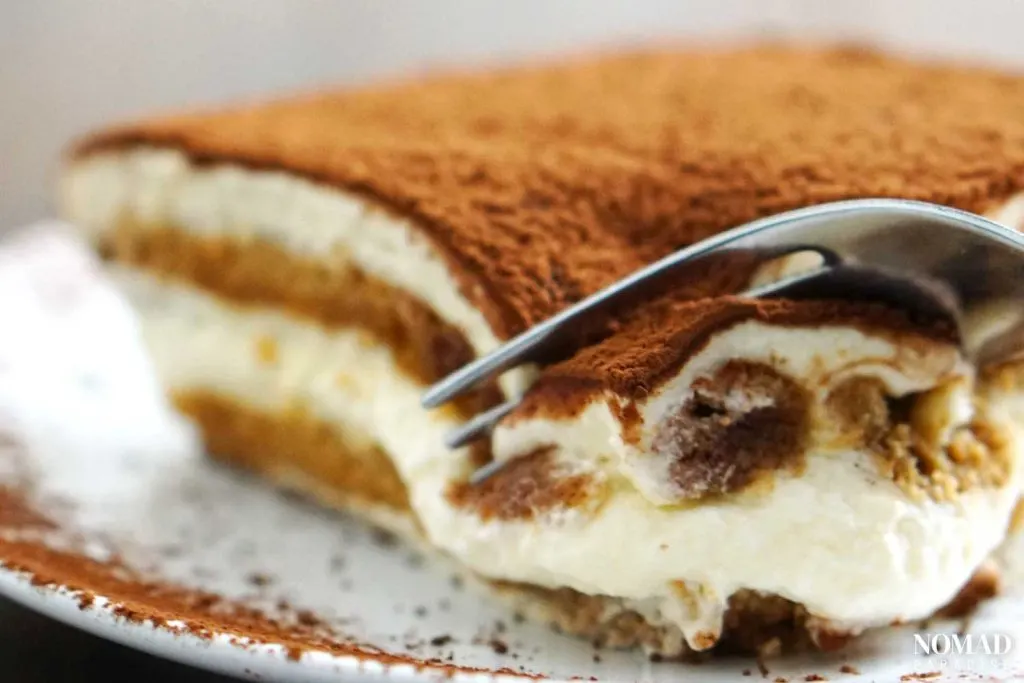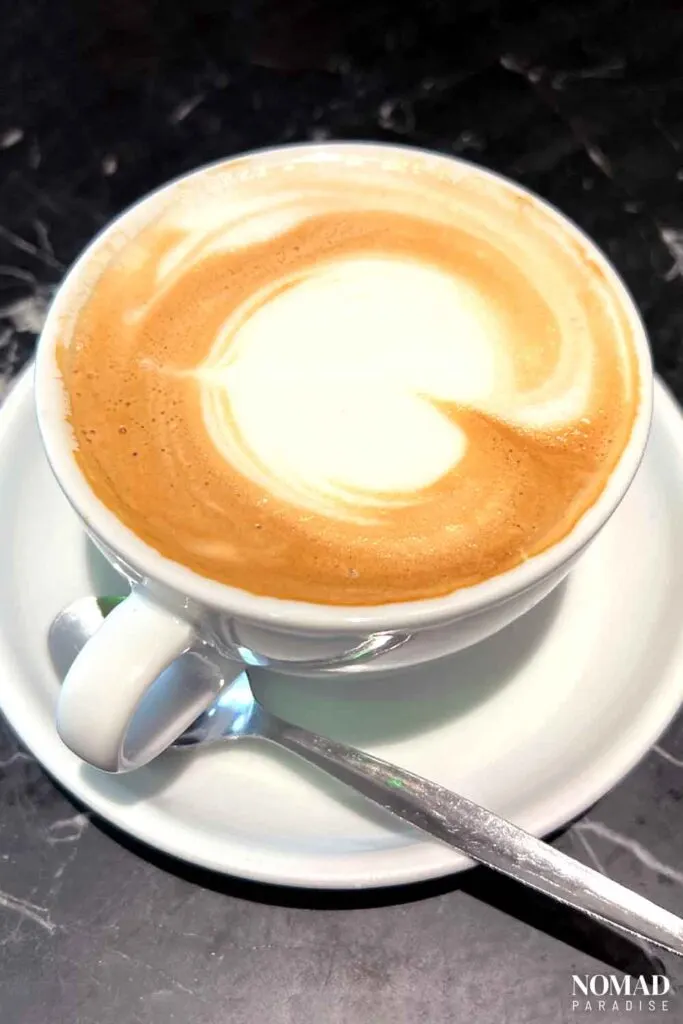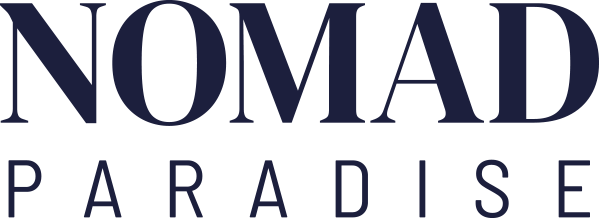This website may contain affiliate links and advertising so that we can provide recipes and guides at no additional cost to you. Learn more
Our Italian coffee guide is full to the brim with facts, insights, and drinks of choice, giving you everything you need to know about enjoying the country’s most beloved beverage in a very Italian way.
We’ve worked closely with Roxana, a writer and foodie who has lived in Rome for over two decades, to leave no stone, or cup in this case, unturned. That way, you order, drink, and enjoy coffee like a true Italian and learn more than a few fascinating things along the way.

Coffee culture is a huge part of day-to-day life in so many countries, but in Italy especially, it really is a way of life. Together, let’s find out more!
Italian Coffee Guide: Customs, Fun Facts, and Most Popular Varieties

Italian Coffee Customs
In Italy, all bars serve coffee.
In most countries, you would expect bars to serve alcohol, but in Italy, they are especially frequented in the morning and after lunch for coffee. Bars also serve breakfast and sometimes lunch and aperitivo.
Most of all, however, they represent a meeting place where people gather before heading to the office and during work breaks for their usual espresso.
Italians drink coffee standing at the counter.
The Italian way to drink coffee is standing at the bar counter. After all, how long can it take to drink an espresso? It’s not like you need to sit down for it!
However, this doesn’t mean you won’t see Italians sitting at a table for coffee. It’s just more common for them to grab a quick coffee at the counter, especially on work days. Plus, having your espresso at the counter can be significantly cheaper than sitting at a table in many places.
Italian coffee culture started in Venice.
Coffee made it to Italy later than other European countries, like Austria or the Balkans, where Turkish merchants introduced it. Venice was the first Italian city to commercialize coffee in the late 16th century. In the early 17th century, the very first café opened in the city.
In the beginning, it was just the aristocracy that consumed the beverage. The high price of coffee in Europe made it an exclusive drink after coffee cultivation began in European colonies.
Another Italian city that became known for its coffee is Naples. The drink arrived here in the early 17th century from Malta, then part of the Kingdom of Sicily. Naples continues to be renowned for its delicious coffee to this day.
Many regional coffee varieties exist.
Although you’ll find most coffee beverages throughout Italy, you will also come across several regional specialties.
For instance, the Caffè Pedrocchi from Padova is made with whipped cream and mint, with cocoa sprinkled on top, while the Caffè Leccese, from the southern Italian city of Lecce, is served with ice cubes and almond milk.
In the Piemonte region, the Bicerin is made with coffee, melted dark chocolate, and whipped cream on top.
One of the most peculiar ways of serving coffee is probably the Caffè alla Valdostana, traditionally of the Valle d’Aosta region in Northern Italy. Coffee comes in a special wood container with several spouts called grolla. Caffè alla Valdostana contains grappa or another liquor, sugar, and lemon or orange zest.
Water is often served with coffee.
When you order an espresso at the bar, you will notice that you also get a small glass of water. Traditionally, you’re supposed to drink the water before your coffee to rinse your mouth and prepare it to fully taste the coffee.
Some people may drink water after coffee, but this mostly happens when the coffee is not very good. However, water is typically served with espresso or macchiato, not with coffee beverages like cappuccino or latte macchiato.
Fun Facts about Italian Coffee
Every Italian has a Moka at home.

In fact, they might even carry it with them on holiday. Okay, that may not be so common anymore, but Italians love their Mokas.
This is the most common way of making coffee at home, so you can expect to find a Moka in every Italian household. Usually, the older it is, the better the coffee.
Many Italians prefer coffee made with the Moka to that served at bars. Furthermore, they rarely trust coffee in other countries, which explains why virtually every Italian living abroad will also have a Moka.
Shop the Bialetti Moka (pictured above) on Amazon
Coffee in Naples was often served with sugar in it.
This tradition is slowly disappearing, but it’s still not uncommon to order coffee in old-style bars in Naples and receive it with sugar already in it.
This is because it was widespread for Neapolitans to drink coffee with sugar, and you’ll still find many who hold on to this tradition.
Nowadays, it’s more common for bartenders to ask whether you want your coffee with or without sugar or serve it dark and allow you to add sugar. It’s still worth paying attention, just in case you come across an old-fashioned bar in the city.
Cappuccino is a breakfast drink.
Of all the different types of coffee you’ll find in Italy, cappuccino is likely the most controversial. You may have heard the so-called rule of not drinking cappuccino after noon. While there may be some flexibility there, one thing is true: Italians only drink cappuccino for breakfast.
However, don’t feel bad about asking for a cappuccino later in the day. But it’s maybe better to avoid ordering it with your lunch. Cappuccino is certainly not a replacement for water or other drinks you may have with your pizza or pasta.
Related: Italian Breakfast Guide
Coffee is the main ingredient in Italy’s most famous dessert.

Without coffee, there would be no tiramisu, Italy’s most renowned dessert. Coffee is a key ingredient in making this delicious dessert, alongside mascarpone and Savoiardi cookies (ladyfingers).
Fun fact: nobody knows exactly who invented tiramisu and where. The dessert probably originated in Veneto or Friuli-Venezia Giulia, two regions in Northern Italy, but nothing is certain.
Furthermore, the first mention of tiramisu in a cookbook dates to 1960, so it’s a pretty recent invention. Whoever it was that invented it, I believe, was a genius!
Read more: Tiramisu Recipe
The caffè sospeso was a popular tradition.
The caffè sospeso tradition started in Naples in the early 19th century. The term means “suspended coffee” and consists of paying for an extra coffee at the bar as a solidarity gesture for whoever may need it and couldn’t afford it.
From Naples, the caffé sospeso spread throughout Italy, and it was a popular tradition for a time. It even became popular in some places outside Italy before slowly disappearing. In recent years, the tradition has made a comeback in Naples, so you may find or leave a caffè sospeso in some bars.
Italian Coffee Beverages
Espresso
Espresso is the most popular type of coffee in Italy by far. This variety is so popular that people usually just ask for “un caffé” at the bar, and they get an espresso. However, Italians may also call it espresso.
While coffee has been around for several centuries, espresso was only invented in 1901 when Luigi Bezzera invented and patented the first espresso coffee machine in Milan. The espresso is made through a pressurized brewing process to create a dense coffee with the typical foam.
The caffeine per unit in the espresso is higher than in most other coffee types, but the serving is small, so espresso doesn’t have as much caffeine as your usual Starbucks brew, for instance.
Ristretto
The caffé ristretto, also just called ristretto, is an even more concentrated espresso. If you thought it doesn’t get “shorter” than the espresso, it actually does. Ristretto in Italian means restricted or limited, indicating the even smaller coffee serving.
The ristretto has slightly less caffeine than the espresso but, because it has less water, it feels much stronger and more concentrated. If you’re looking for a quick energy hit and a strong coffee taste, ristretto is a great way to go.
Lungo
On the flip side of the ristretto, the caffé lungo is a longer version of the espresso. Because it contains more water, people may think that caffé lungo has less caffeine than a regular espresso.
However, among espresso types, this is the coffee with the highest caffeine content. It’s worth noting that this coffee also comes in an espresso cup, so it’s only slightly longer than an espresso.
In short, don’t expect an Americano. Caffè lungo is ideal if you need more caffeine but still want a short coffee.
Doppio
Doppio in Italian means “double,” so this coffee beverage consists of two shots of espresso, generally served in a cappuccino cup. As you can imagine, this coffee has double the amount of caffeine of an espresso, but it feels just as strong; you just get to drink more coffee.
If Italians order a caffè doppio at a bar, it usually means they need an extra shot of energy. It’s probably a tough morning.
Macchiato

A caffè macchiato is a shot of espresso with a small quantity of milk. This coffee is served in an espresso cup with warm or cold milk. For the espresso freddo, the cold milk is usually served on the side, so you can add it to the espresso.
If you ask for a macchiato caldo, you get an espresso with warm, foamed milk. A variation of the macchiato caldo is the caffé schiumato (foamed) which only contains milk foam. Although regular whole or semi-skimmed milk is the most widespread, you may find plant milk in many bars now.
Cappuccino

Now for Italians’ favorite breakfast drink. The cappuccino is made with a shot of espresso and equal parts of milk and milk foam. Italians have the cappuccino in the morning, usually with a croissant. This is the most typical Italian breakfast option.
Outside of Italy, it’s not unusual to order cappuccino at any time of day. While there is no hard rule about the cut-off time for ordering a cappuccino at a bar in Italy, don’t order it with your lunch if you want to avoid perplexed looks from your waiter.
Latte Macchiato
Latte macchiato is another popular coffee beverage in Italy, made with a higher milk quantity than cappuccino. The latte macchiato, literally “stained milk,” is traditionally served in a tall glass, which allows you to see the distribution of the milk and coffee.
Latte macchiato is made with steamed milk, with the espresso added at the end, so it somehow sits in the middle, in between layers of steamed milk, with the creamier part on top. Note that you must ask for latte macchiato, not just latte, which means “milk” in Italian.
Caffè Latte

The caffè latte is what you might call a latte outside of Italy. This variety is not as common as the latte macchiato, especially at a bar.
In the caffè latte, coffee and milk are blended, and the beverage is finished with foamed milk. You can have a caffè latte in a glass or a big cup. This coffee beverage contains more milk than cappuccino.
Americano
If you’re looking for a classic long coffee to sip on, you should order an Americano. They say the Americano was invented in Italy during World War II when American soldiers in Italy would add hot water to the espresso to make it resemble the coffee they used to drink in the US.
Another version of the term origin comes from Central America, where people would use café americano to refer to mild coffee in a derogatory way. Whatever the story behind it, in Italy, caffè americano is an espresso with added hot water, served in a big cup. Note that this is not filter coffee, which you may only find in certain specialty coffee places in Italy.
Marocchino
The marocchino is a special coffee made with espresso, cocoa powder, and foamed milk. Traditionally, cocoa powder is used to dust the cup before pouring the coffee and then sprinkled on top.
The coffee beverage was first created in Alessandria, a city in Piedmont, in 1929. The name marocchino, which means Moroccan in Italian, comes from the color of a specific leather type commonly used as a hairband at the time.
Several variations of the marocchino exist. A popular variety contains Nutella instead of the first layer of cocoa powder.
Mocaccino
Mocaccino is a tasty and indulging coffee beverage consisting of a cappuccino with the addition of chocolate and optional heavy cream and cocoa powder to sprinkle on top. A slightly alcoholic variation of this contains chocolate liquor.
The mocaccino often comes in a glass rather than a cup. The dark chocolate flakes are melted in hot milk and added to the bottom, followed by steamed milk and espresso. In a transparent glass, you can see the distinct layers.
Caffè Corretto
A caffè corretto is an espresso with a small addition of some alcoholic beverage, usually grappa (traditional Italian pomace brandy) or Sambuca. Other liquors may also help “correct” the coffee, such as brandy, rum, or whisky cream.
If you want your coffee with a kick, order a caffè corretto. In most cases, the bartender will add the liquor directly to the espresso, but sometimes you may get it in a small glass on the side to add it yourself.
Caffè Shakerato
On a hot summer day, when you need some caffeine but don’t feel like drinking a hot beverage, ask for a caffè shakerato. The refreshing drink consists of coffee, sugar, and ice cubes added to a cocktail shaker and thoroughly shaken.
When shaken, the ingredients create a sweet foam on top. The caffè shakerato is often served in a Martini glass.
Crema di Caffè
More than a beverage, crema di caffè is something to eat. With a creamy consistency slightly more liquid than an ice cream, the crema di caffè is a refreshing treat, perfect on a hot Italian summer day.
The crema di caffè, or coffee cream, contains three simple ingredients: coffee, sugar, and heavy cream. The creamy treat is served in a glass and eaten with a teaspoon.
Caffè Freddo
Caffè freddo is another refreshing coffee beverage that some bars may serve in summer and that many Italians may have at home. The recipe is simple: coffee that has been sweetened while hot and then stored in the fridge.
You can have plain caffè freddo or with milk. It’s a great option when you need an energy boost but don’t feel like having hot coffee. At home, Italians may make coffee in a Moka and then let it cool down before storing it in the fridge.
Decaffeinato
The decaffeinato, also called deca, is decaffeinated coffee. You can have decaf in nearly all the coffee beverages mentioned above, from espresso and macchiato to cappuccino and latte macchiato. However, people will rarely have a double decaf.
Lastly, a widespread alternative to decaf is barley coffee, called caffé d’orzo in Italian. Although this is not technically coffee, it’s very popular.
Summary
Yep, Italians are very serious about their coffee, that’s for sure! With our guide, you can order coffee in Italy with confidence and sample a wide range of different coffee beverages.
There’s a world of coffee that lays in wait for you, no matter where in the country you travel to. Embrace it, savor those rich flavors, and let us know in the comments what your favorite Italian coffee drink is.
You Might Also Like to Read
- 18 Tasty Italian Desserts (with Recipes)
- 16 Traditional Italian Foods and Where Best To Try Them
- 35 Italian Drinks You Should Try in the Mediterranean Country
- 18 Tasty Italian Pastries to Try in Italy
- 22 Italian Cooking Tools and Gadgets You Need in Your Kitchen
Save and Pin for Later
Planning a trip to Italy soon? Keep our Italian coffee guide for safekeeping by saving it to one of your travel planning Pinterest boards.

